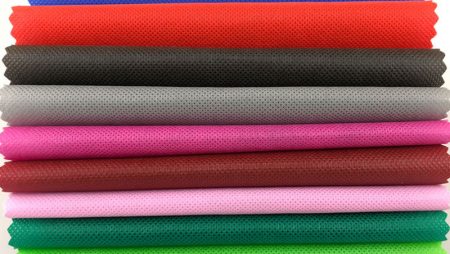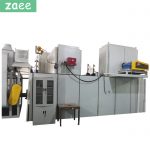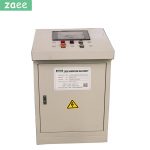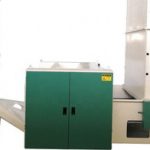October has four big positive news, what will happen to the “silver ten” textile industry?
The entire gold nine market is in the tepid fire, the market shows a strong wait-and-see mood, the raw material purchase is not positive. And the chemical fiber market can be described as tragic, not only experienced the upstream chemical fiber raw material market rose after the market fell sharply, but also faced the “sino-us trade war” on the terminal textile and clothing export market repression.
Right now, after entering October, ushered in 4 heavy advantage however! Will the good news give a boost to the silver ten in the textile industry?
1. The central bank cut the reserve requirement ratio to release more than one trillion yuan of funds
At noon on October 7, the last day of the National Day, China’s central bank announced that it would cut the required reserve ratio (RRR) of some financial institutions by 1 percentage point from October 15 to replace the medium-term lending facility (MLF) due on that day.
Starting from October 15, 2018, the reserve requirement ratio for large commercial Banks, joint-stock commercial Banks, urban commercial Banks, non-county rural commercial Banks and foreign Banks will be lowered by 1 percentage point.
Apart from this, the RRR cut will release an additional 750 billion yuan. We can increase the sources of funding for financial institutions to support small and micro businesses, private enterprises and innovation-oriented enterprises, enhance the vitality and resilience of economic innovation, enhance endogenous growth drivers, and promote the healthy development of the real economy.
Good news: as the central bank, government funds and the focus of the government turn to thousands of small and micro enterprises, especially accelerate the “debt-for-equity” swap, the tight cash flow pressure of textile enterprises is expected to be effectively relieved.
Secondly, funds of textile traders and weaving enterprises are supplemented, which is conducive to the stability of the textile market and medium and long-term development of the market. Textile enterprises appropriately increase the storage of polyester filament and other materials to avoid the risk of PTA futures and other huge fluctuations.
In addition, affected by the RRR reduction policy, the onshore exchange rate of RMB fell more than 400 points against the us dollar on the first trading day after the National Day holiday, reaching a new high after the resumption of the central bank’s “counter-cyclical factor” on August 25, 2018, and less than 100 points from the new low of 6.9331 on August 15.
A small fall in the RMB exchange rate caused by the central bank’s RRR cut will help the development of textile trade.
2. The export tax rebate rate was raised twice in the year to reduce the burden of textile foreign trade enterprises
At an executive meeting of the State Council on October 8, measures to improve the export tax rebate policy and speed up the tax rebate process were confirmed, which will reduce the burden on enterprises and help China maintain a stable growth in foreign trade.
The meeting decided to raise the current export tax rebate rate of 15% and some 13% to 16% from November 1, 2018. 9% to 10%, of which 13%; 5% to 6%, and some to 10%. The tax rebate rate for high energy consumption, high pollution, resource products and products facing the task of cutting overcapacity will remain unchanged.
At the same time, further simplify the tax system, tax rebate rate from the original seven to five, accelerate the progress of tax rebate, the average processing time will be reduced from the current 13 working days to 10 working days before the end of this year.
It is worth noting that this November is the second time this year to raise the export tax rebate rate. Since September 15, China has raised the export tax rebate rate on 397 items including electromechanical and cultural products, including multi-component integrated circuits, non-emi filters, books and newspapers, to 16 percent.
Good: on the one hand, the increase of export tax rebate, can increase the profits of enterprises, reduce the burden for enterprises;
On the other hand, the average time of export tax rebate is shortened from the current 13 working days to 10 working days, which will also help enterprises to have sufficient cash flow and relieve the pressure of enterprise capital turnover.
3. The ministry of environmental protection has officially issued a regulation on reducing pollution and reducing production
China has relaxed its winter pollution controls as it prioritises economic growth over environmental governance in a damaging trade war.
With new us tariffs on $200bn of Chinese imports already at 10 per cent and likely to rise to 25 per cent on January 1, the Chinese economy is starting to feel the pinch.
China’s manufacturing growth is losing momentum as companies prepare for the impact of U.S. tariffs. China’s latest official manufacturing purchasing managers’ index fell to 50.8 in September from 51.3 in August, the lowest level in eight months. Meanwhile, the caixin manufacturing purchasing managers’ index fell to 50.0, dangerously close to a contraction below 50.
Chinese manufacturers of finished goods exported to the United States have been particularly hard hit, cutting back on purchases of raw materials.
China’s domestic prices, for example, fell 9 per cent to a nine-month low in one week at the end of September as a result of falling demand from us tariffs on finished goods containing polyvinyl chloride (PVC).
As China’s economy slows, its leaders are loosening environmental regulations to stimulate growth. Beijing, tianjin, hebei and surrounding areas will implement a 3 percent year-on-year reduction in the average intensity and number of days of PM2.5, the official Xinhua News Agency reported on Sept. 27. The target, which will be implemented from October 2018 to March 2019, will affect bricks-and-mortar manufacturing producers.
That is less than the 5 per cent reduction proposed in the preliminary plan reported by the south China morning post in August and well below last year’s target of “at least 15 per cent”, the paper said. It is also well below a similar target set by China’s state council in March 2018. At that time, an overall target of 30 percent reduction in the average PM2.5 concentration in key areas was set for 2018.
The upside: for chemical companies, this could mean that older, smaller, more polluting plants will be targeted and new plants will be unaffected.
As a result of the relaxation of the new rules, plastic processors are likely to close less. Factory closures have been a disincentive to prices in recent months.
Still, any benefit from rising polymer consumption is expected to be very limited, as offsetting gains would negatively impact U.S. tariffs on Chinese plastic imports.
4. Since November, China has lowered the MFN tax rate on some commodities. Textile machinery has become cheaper
In order to implement the decision and deployment of the CPC Central Committee and the State Council, China has implemented zero tariff on most imported drugs since May 1 this year, lowered import tariff on automobiles, spare parts and some daily consumer goods since July 1, and implemented the third step of expanding perinals under the information technology agreement to reduce tax.
The tax reduction mainly involves textiles; Stone, ceramics, glass products; Some steel and base metal products; Mechanical and electrical equipment and parts, such as metal processing machinery, textile machinery, construction machinery, power transmission and transformation equipment, electrical equipment, instruments and meters; Resource commodities and primary processing products, such as non-metallic minerals, inorganic chemicals, wood and paper products, precious jade and so on. A total of 1,585 tax items were reduced, accounting for 19% of China’s total tax items. The average tax rate was reduced from 10.5% to 7.8%, with an average reduction of 26%. At the same time, with the reduction of the general tariff level, especially the import tariff of pharmaceuticals and daily consumer goods, the tariff item rate of import tax of imported articles (commonly known as “post tax”) is correspondingly lowered.
Pro: as is known to all, with the deepening of environmental protection policy, the number of looms in some traditional textile clusters is strictly controlled, and how to make one machine produce more profits has become a problem of great concern to weaving bosses.
Affected by loom index and technology upgrading, more and more weaving enterprises begin to buy imported looms. The reduction of textile machinery import tax rate will directly reduce the operating cost of enterprises.
Edit: whether it is to reduce the ratio, or increase export tax rebate, or to reduce the MFN tax rate, to the textile enterprises are directly visible. I believe that with the help of so many favorable policies, textile people will be able to get out of the trough and reach a higher level!




